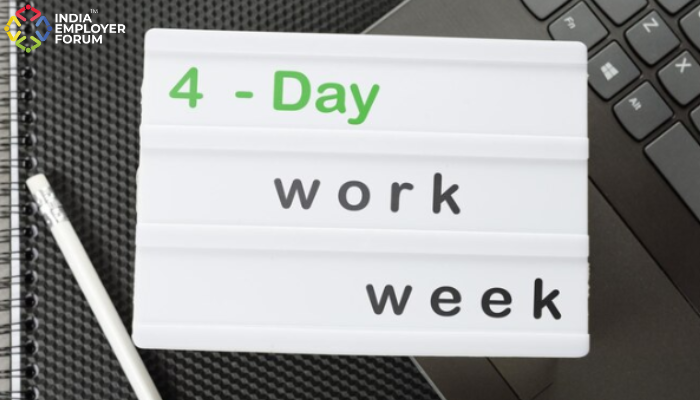The first quarter of the new financial year saw more than 90% of employees of the likes of Wipro, Tech Mahindra, HCL, Infosys, and other popular Indian IT companies working from home. This figure may see a dip in the coming months as more and more companies are resuming operations, even though with reduced strength. The future of work seems to be moving towards a blended working model that will have a mix of both the traditional office and work from home components.
A Bain survey conducted on more than 900 employees in India for the period right at the start of the imposition of the first lockdown – from 28 April to 20 May 2020 – found that over half of the people surveyed experienced an increase in productivity while working from home due to improved focus and no travel. More than 40% of the ones left reported a decline in productivity during this WFH period due to the non-availability of a dedicated workspace and absence of the mindset required to focus on work.
These statistics can reveal only as much information as you want to draw out of them. Overall, it can be said that work from home has been a success for the majority of companies. It has provided them with a way to continue their operations in times when other businesses have to shut up shop due to their inflexibility. However, it would be hard to see this remote working scenario going on forever. Lots of companies have already resumed operations while many others are planning their way to get back.
You might also be interested to read: Reimagining Workplace Post COVID-19
It would be wrong to predict the end of the traditional office amidst the widespread acceptance of the remote working model due to the pandemic. It has survived pandemics and World Wars before so it won’t be disappearing anytime soon – though it may undergo more changes than it has ever done before.
Traditional offices have stood the test of time. They have managed to exist for five millennia and survive the worse this world has ever seen because of a simple reason – they work. An office gives people the mindset to flourish. It is hard to get that focus when you are working from home on a regular basis. In an office, it is easy to have a chat or laugh with colleagues that sit next to you or those that pass by your workstation – something that can’t be done over the video call while you are working remotely. So the blended work approach seems to be the right way to go in the future.
By bringing blended working practices into the mix, businesses will be able to give their employees the much-needed flexibility whose benefits go beyond what organizations have experienced during the pandemic. At the same time, organizations that are planning to completely move towards remote working need to understand the importance of the traditional office. Building connections and team spirit in a team that is working from home are very difficult. Also, remote working can’t be seen as a direct replacement of office working. Working from home on a regular basis during these stressful times has caused several people mental health problems. In an office, employees have their colleagues and managers around them whom they can talk to when they are feeling low. So a traditional office isn’t only a place that improves efficiency but also a refuge for those that can survive the work from home environment for long. This is where a blended work environment provides an ideal solution.
The blended working model has all the makings of a working model that can improve organizational performance. However, the groundwork needs to be done right to ensure that nobody encounters any problem while working from home, in the office, or virtually. A blended workforce is indeed a flexible workforce but organizations that are adopting this model will have to ensure that it has the right technology and tools at the ready to support all those that are working from different locations. They will have to make sure that this quest of achieving more flexibility doesn’t make them compromise on their daily business productivity. Whether it is a small team or a big one, blended working will only work if the right framework is in place.
Moving towards blended working comes with a basic understanding of how employee wellbeing works. It is important for organizations to ensure the safety of those employees that are coming to the office. It is not too difficult to assume that social distancing norms will be in effect for quite some time. So it will be important for companies to provide tools to employees that are coming to the office to maintain proper distance while working and communicating. The use of thermal imaging cameras will also become commonplace for ensuring employee wellbeing in the future.
The importance of blended working can be understood from the freedom and flexibility it will offer to employees. Following the blended working approach is not just about having the right tools and technology in place to make it easy for employees to work in the office, from home or anywhere else, but also letting the employees choose the best way for themselves. There will be people who will prefer working from home and there will also be those that would choose an office setting. This freedom of choosing the way they want to work and how they want to do it will be one of the reasons that employees will use to choose one company over another in the time to come. So it will become imperative for every company that wants to hire and retain good talent to provide this flexibility.
The pandemic isn’t going to be the end of the traditional office but it will certainly change the way how it is seen and used. The post-pandemic era could bring forth a total re-imagination of the traditional office, which could result in the widespread adoption of the blended working model. It won’t come as a surprise either as this model can potentially combine the advantages of two completely different modes of working, which can be beneficial for both employees and organizations.
References:
- “We aren’t experiencing the death of the office – but the rise of blended working” | David Mills | 10 August 2020
- “Blended working model the new way of working – #future of work” | Neha Jain | 28 July 2020
You might also be interested to read:
Related Topics:




